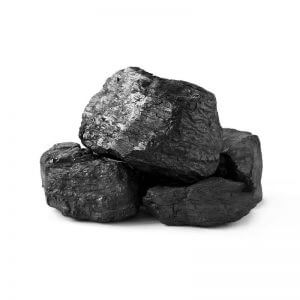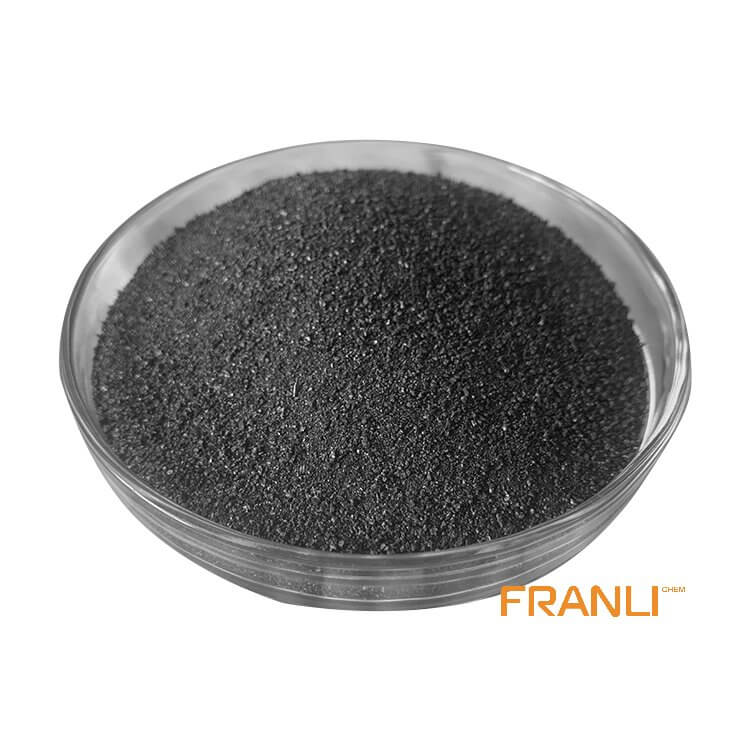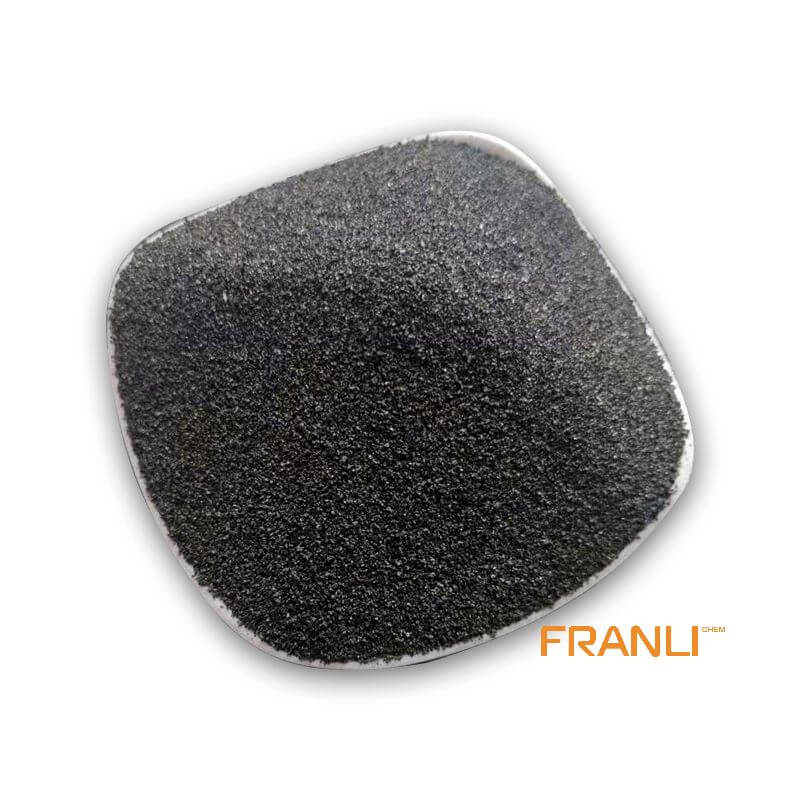


Petroleum Coke
Size
According to your requirements
Package
25 kg small bags into ton bags or ton bags
Features
Low ash content and low boiler ash discharge, etc.
Application
Depending on its quality, petroleum coke can be used in industries such as graphite, smelting and chemical industry, etc
Petroleum coke, as a byproduct of petroleum, is produced in the process of petroleum processing, that is, the crude oil is distilled to separate light and heavy oil, and the heavy oil is converted into petroleum coke by hot cracking. If petroleum coke can be obtained directly from petroleum processing, then the petroleum coke is raw coke or ordinary coke. Petroleum coke has irregular shape, dark gray or black, porous structure and metallic luster.
Request a quote
Petroleum coke is a product of crude oil that is distilled to separate light and heavy oils, and then the heavy oils are converted into products through the process of thermal cracking. From its appearance, the coke is black with irregular shapes and different sizes. Lump (or particles) with a metallic luster, coke particles have a porous structure, the main element is carbon, occupying more than 80wt%, and the rest are hydrogen, oxygen, nitrogen, sulfur, and metal elements. Petroleum coke has its unique physical, chemical, and mechanical properties. It is the non-volatile carbon of the heat-generating part. The volatiles and mineral impurities (sulfur, metal compounds, water, ash, etc.) determine the chemical properties of coke.

1.Classification and properties of petroleum coke
The form of petroleum coke varies with the process, operating conditions, and feed properties. The petroleum coke produced from the petroleum coke plant is called green cokes. It contains some volatile components of uncarbonized hydrocarbon compounds. The green coke can be used as fuel-grade petroleum coke. Electrodes used in steelmaking need to be calcined to mature coke at high temperatures to complete carbonization and reduce volatile content to a minimum.
Most of the coke produced in petroleum coke plants is dark brown porous solid and irregular in appearance. This type of coke is also called sponge coke. The second type of petroleum coke with better quality is called needle coke and sponge coke ratio. Because of its lower electrical resistance and thermal expansion coefficient, it is more suitable for electrodes. Sometimes another type of hard petroleum coke is also produced, called shot coke. This kind of coke is shaped like a projectile, has a small surface area, and is not easy to coke, so it is not very useful.
Petroleum coke has its unique physical, chemical, and mechanical properties. It is the non-volatile carbon of the heat-generating part. The indicators of volatiles and mineral impurities (sulfur, metal compounds, water, ash, etc.) determine the chemical properties of coke. The porosity and density of the physical properties determine the reactivity and thermophysical properties of coke. The mechanical properties are affected by hardness, wear resistance, strength and other mechanical properties, particle composition and other processing and transportation, stacking, storage, and other properties.
2. Processing technology of petroleum coke
Petroleum coke is made of heavy oil or other heavy oil after the crude oil is distilled. It passes through the furnace tube of the 500℃1℃ heating furnace at a high flow rate so that the cracking and condensation reaction is carried out in the coke tower, and the coke is grown for a certain period of time to cool the coke. , Decoking to produce petroleum coke.
Uses: Mainly used to prepare carbon products, such as graphite electrode, anode arcs, for steelmaking, non-ferrous metals, and aluminum smelting; to prepare silicon carbide products, such as various grinding wheels, sand skins, sandpaper, etc.; to prepare commercial calcium carbide For the production of synthetic fibers, acetylene, and other products; can also be used as fuel.
3.The quality standard of petroleum coke
Delayed petroleum coke refers to the green coke produced by the delayed coking unit, also known as ordinary coke. There is no corresponding national standard. The current domestic production enterprises mainly produce according to the industry standard SH0527-92 formulated by the former Sinopec Corporation (see the attached table for details). This standard is mainly classified according to the sulfur content of petroleum coke. Among them, the first grade and No. 1 coke are suitable for the production of ordinary power graphite electrodes in the steelmaking industry, and are also suitable for the aluminum smelting industry as carbon for aluminum; the No. 2 coke is used for the aluminum smelting industry Electrode paste and production electrodes used in the middle electrolytic cell (furnace), No. 3 coke is used to produce silicon carbide (grinding material) and calcium carbide (calcium carbide), as well as other carbon products, and also used to manufacture the anode bottom of the aluminum smelting electrolytic cell Block and used for blast furnace carbon lining brick or furnace bottom construction.

4. The use of petroleum coke
(1) It can be used as fuel for boilers, cogeneration of steam and electricity, cement kilns, etc.
(2) Make aluminum smelting anode electrodes.
(3) Directly used as a carbon source for chemicals such as elemental phosphorus, calcium carbide, and silicon carbide.
(4) Make electrodes for the production of elemental phosphorus, titanium dioxide, carbonization, and silicon carbide electric furnaces.
(5) Make graphite
5. Application of petroleum coke
Petroleum coke can be used as a fuel and has a higher calorific value than coal; it has less volatiles and ash than coal, but has higher moisture and sulfur than coal, and is often used to replace coal in cement kilns. According to statistics, about 38% of the petroleum coke produced in the world is used in the cement industry, and about 12% is used as fuel for industrial boilers. Taking a cement plant with an annual output of 850,000 tons as an example, comparing the economic analysis of using 100% coal as fuel and 50% coal and petroleum coke as fuel, it can save 18.6% of fuel costs each year. The investment required for dual fuel can be recovered in about one year.
Use:
Mainly used to make carbon products, such as graphite electrodes, pre-baked anodes, for steelmaking, non-ferrous metals, and aluminum smelting;
Preparation of carbonized silicon products, such as various grinding wheels, sand skins, sandpaper, carbon products, etc.;
Commercial calcium carbide is produced for the production of synthetic fibers, acetylene, and other products; it can also be used as fuel, but when used as fuel, a staged impact mill is used for ultra-fine pulverization. The main sources of coke powder as fuel are glass factories and power plants.
Classification: According to different forms, there are four types:
(1) Needle coke: It has an obvious true-like structure and fiber texture, and is mainly used for high-power and ultra-high-power graphite electrodes in steelmaking.
(2) Sponge coke: high sulfur content, high moisture content, rough surface, and high price.
(3) Shot coke or spherical coke: spherical in shape, 0.6~30mm in diameter, low water content due to smooth surface. It is generally produced from high sulfur and high asphaltene residues, and can only be used for power generation, cement, and other industrial fuels.
Powder coke: It is produced by a run-off coking process, and its particles (diameter 0.1~0.4mm) have high volatile content and high thermal expansion coefficient, which can not be directly used in electrode preparation and carbon industry.
1. The nature of petroleum coke
Petroleum coke is a black or dark gray hard solid petroleum product with metallic luster and porosity. It is a carbon body made of tiny graphite crystals formed into granules, columns, or needles. The petroleum coke component is a hydrocarbon, which contains 90-97% carbon, 1.5-8% hydrogen, and also contains nitrogen, chlorine, sulfur, and heavy metal compounds.
Petroleum coke is a by-product when the feedstock oil of the delayed coking unit is cracked at high temperatures to produce light oil. The output of petroleum coke is about 25-30% of the raw oil. Its low calorific value is about 1.5-2 times that of coal, ash content is not more than 0.5%, volatile content is about 11%, and its quality is close to anthracite.
2. The quality standard of petroleum coke
Delayed petroleum coke refers to the green coke produced by the delayed coking unit, also known as ordinary coke. There is no corresponding national standard. Now domestic manufacturers mainly produce according to the industry standard SH0527-92 formulated by the former Sinopec Corporation (see the attached table for details). This standard is mainly classified according to the sulfur content of petroleum coke. Among them, the first grade and No. 1 coke are suitable for the production of ordinary power graphite electrodes in the steelmaking industry, and are also suitable for the aluminum smelting industry as carbon for aluminum; the No. 2 coke is used for the aluminum smelting industry Electrode paste and production electrodes used in the middle electrolytic cell (furnace), No. 3 coke is used to produce silicon carbide (grinding material) and calcium carbide (calcium carbide), as well as other carbon products, and also used to manufacture the anode bottom of the aluminum smelting electrolytic cell Block and used for blast furnace carbon lining brick or furnace bottom construction.
3. The main uses of petroleum coke
The main uses of petroleum coke are pre-baked anodes and anode pastes used in electrolytic aluminum, carbon industry production of recarburizers, graphite electrodes, smelting industrial silicon, and fuels.
According to the structure and appearance of petroleum coke, petroleum coke products can be divided into four types: needle coke, sponge coke, shot coke, and powder coke:
(1) Needle coke, with obvious needle-like structure and fiber texture, is mainly used as high-power and ultra-high-power graphite electrodes in steelmaking. Because needle coke has strict quality index requirements in terms of sulfur content, ash content, volatile content, and true density, there are special requirements for the production process and raw materials of needle coke.
(2) Sponge coke has high chemical reactivity and low impurity content. It is mainly used in the aluminum smelting industry and carbon industry. (3) Shot coke or spherical coke: It is spherical in shape with a diameter of 0.6-30mm. It is generally produced from high-sulfur, high-asphaltene residue and can only be used as industrial fuels such as power generation and cement.
(4) Powder coke: It is produced by a fluidized coking process, with fine particles (0.1-0.4mm in diameter), high volatile content, and a high coefficient of thermal expansion, so it cannot be directly used in electrode preparation and carbon industry.
According to the different sulfur content, it can be divided into high-sulfur coke (sulfur content above 3%) and low-sulfur coke (sulfur content below 3%).
Low-sulfur coke can be used as anode paste and pre-baked anodes for aluminum plants and graphite electrodes for steel plants. in
High-quality low-sulfur coke (sulfur content less than 0.5%) can be used to produce graphite electrodes and recarburizers.
Low-sulfur coke of general quality (less than 1.5% sulfur) is often used to produce prebaked anodes.
The low-quality petroleum coke is mainly used for smelting industrial silicon, silicon carbide, and producing anode paste.
High-sulfur coke is generally used as fuel in cement plants and power plants.
Calcined petroleum coke:
In the graphite electrode for steelmaking or the anode paste (melting electrode) for aluminum and magnesium, in order to adapt the petroleum coke (green coke) to the requirements, the green coke must be calcined. The calcination temperature is generally around 1300°C, and the purpose is to remove the volatile content of petroleum coke as much as possible. This can reduce the hydrogen content of petroleum coke re-products, increase the degree of graphitization of petroleum coke, thereby improving the high-temperature strength and heat resistance of the graphite electrode, and improve the conductivity of the graphite electrode. Calcined coke is mainly used to produce graphite electrodes, carbon paste products, carborundum, food-grade phosphorus industry, metallurgical industry, and calcium carbide, among which graphite electrodes are the most widely used. The raw coke can be directly used for calcium carbide as the main material of calcium carbide without calcining, to produce silicon carbide and boron carbide as abrasive materials. It can also be directly used as coke for metallurgical industry blast furnaces or blast furnace wall lining carbon bricks, and it can also be used as dense coke for the casting process.



